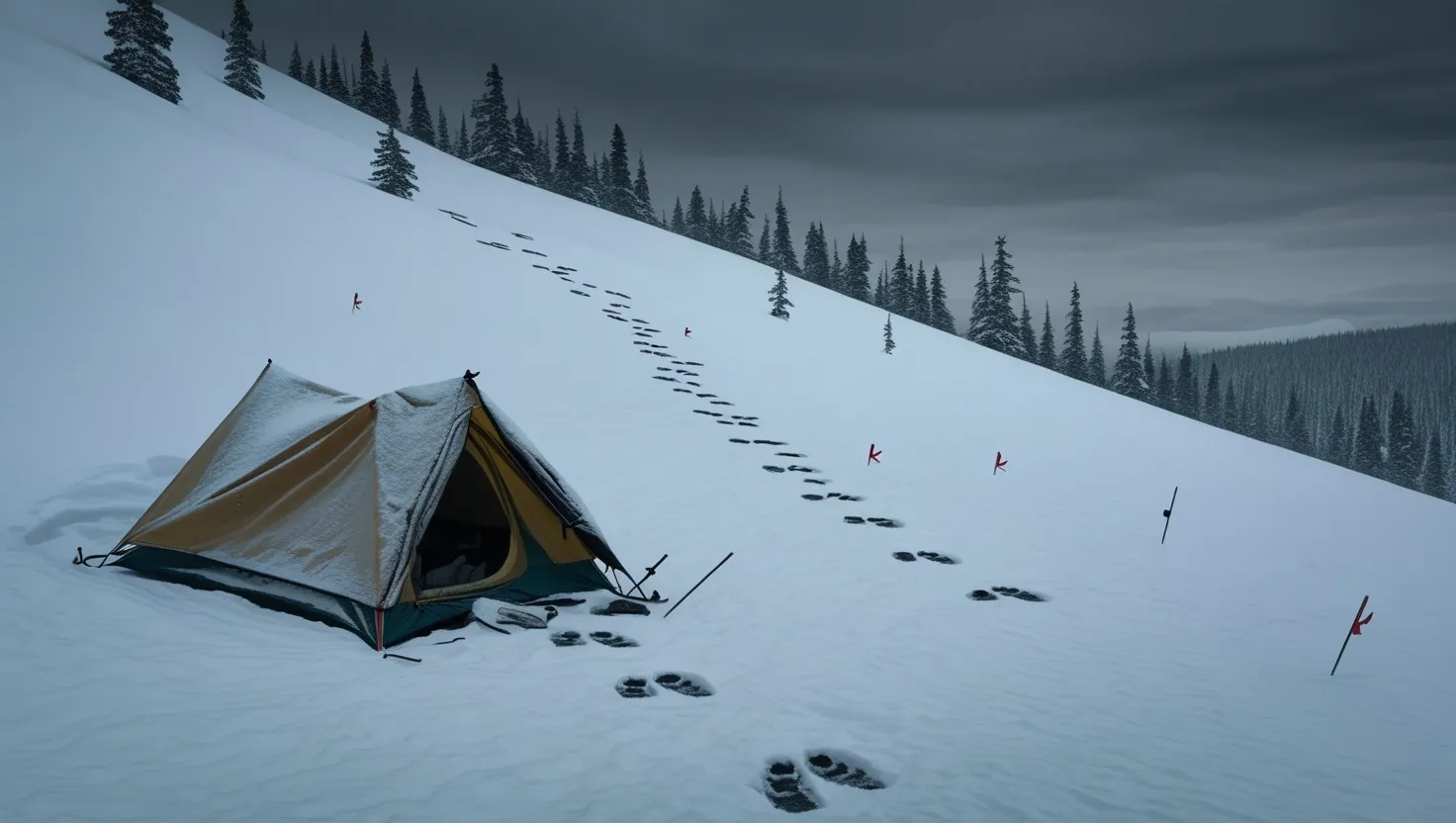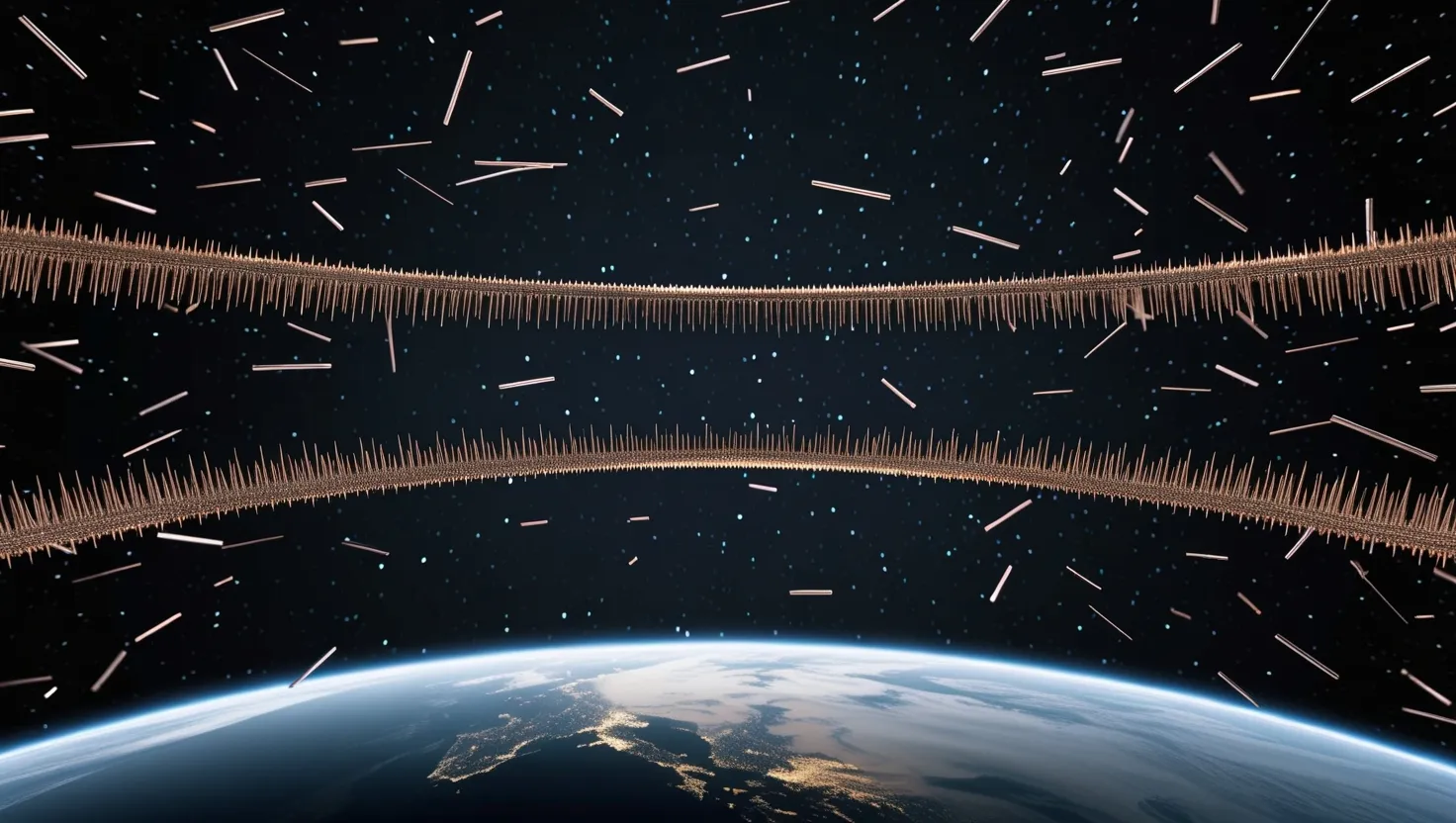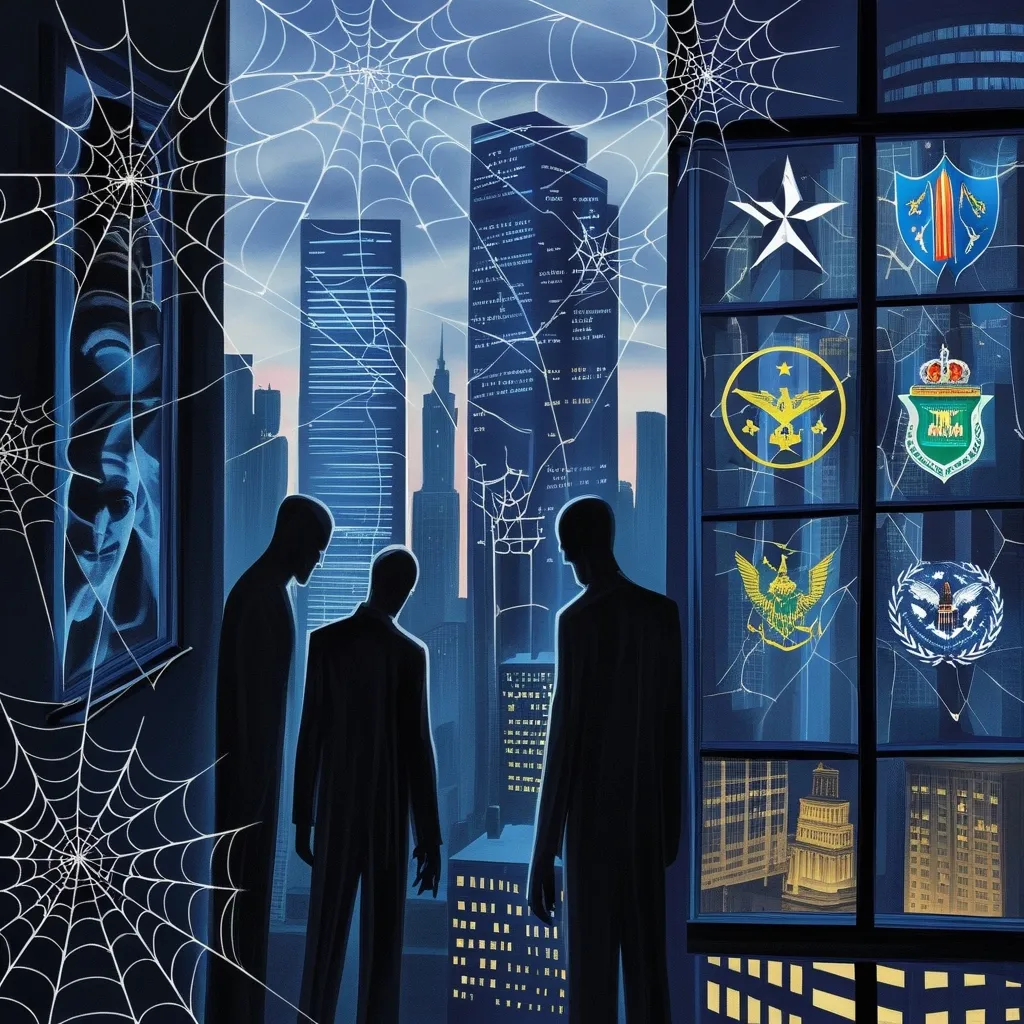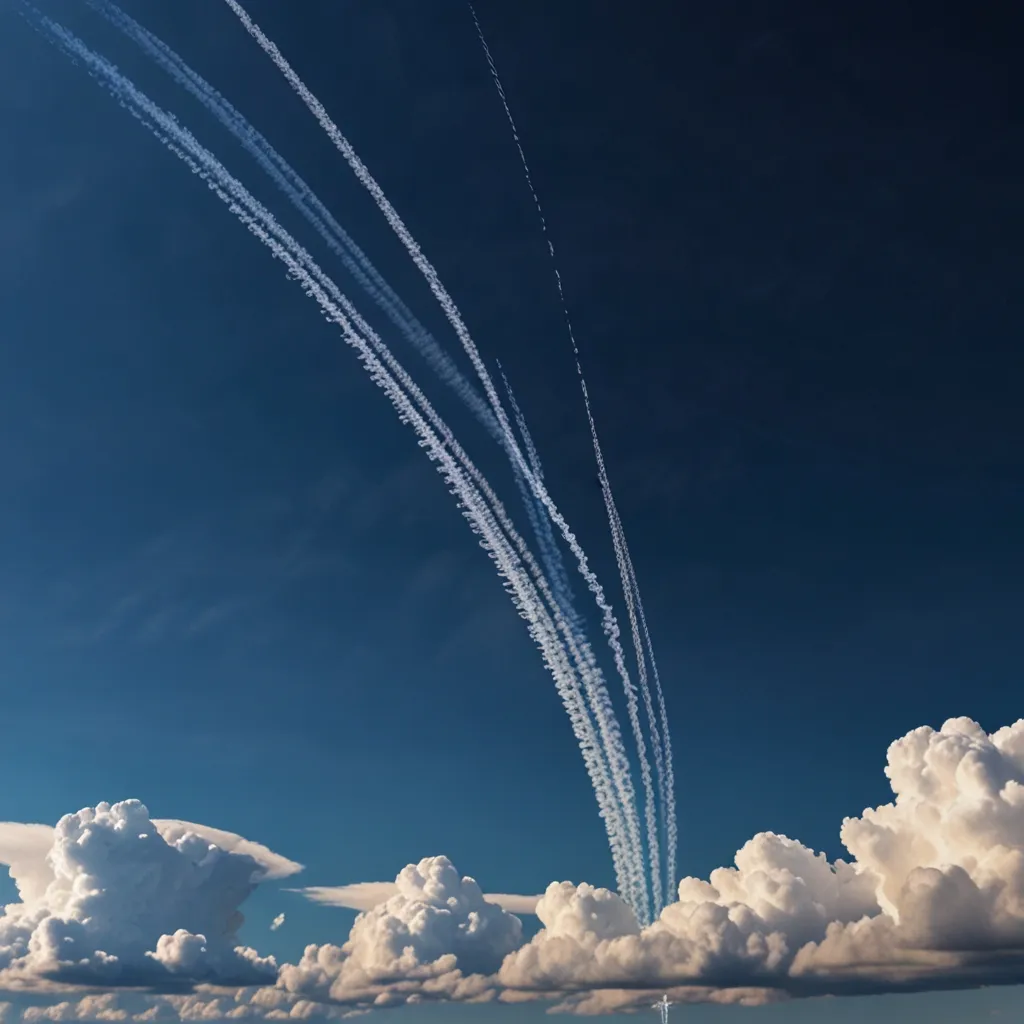I find myself repeatedly drawn back to that snowy slope in the Ural Mountains, where in February 1959, nine experienced hikers set up camp and then vanished into the pages of one of the twentieth century’s strangest mysteries. Some stories grab hold of our imagination and simply refuse to let go. The Dyatlov Pass Incident is that kind of story—filled with hard facts, strangeness, rumors, and an atmosphere so thick with secrecy that every answer seems to lead to new questions.
Imagine arriving at the scene as one of the searchers: you find a tent, its fabric torn from the inside. The hikers’ boots and heavy coats are left behind—a decision that makes no sense in the brutal cold. Bare or nearly bare footprints lead away, disappearing into the snow and trees. Bodies are scattered up to a mile away, oddly positioned, with injuries that read like something from a work of fiction: fractured ribs, crushed skulls, burned skin. One woman, Lyudmila Dubinina, is missing her tongue and eyes. How would you even begin to make sense of this scene?
As I sift through piles of articles and books, a strange fact stands out: the official Soviet investigation labeled the cause as “a compelling natural force.” The phrase is ambiguous, raising more questions than it answers. Of all the official explanations I’ve encountered, this is the most honest: nature can be cruel and mysterious—but is that really what happened on Kholat Syakhl?
Let me pause for a moment and ask: What would make you tear your way out of a tent in the dead of night, in temperatures dropping below minus 20 degrees Celsius, leaving behind the very clothing you need to survive? The possibilities take us down roads that range from the conventional to the fantastic.
Avalanche is the classic guess, and for decades it has dominated the official story—and textbooks. On the face of it, it should be simple. The hikers cut into a snow slope to place their tent; snow gives way in the night; panic and chaos follow. But if you linger here, things don’t quite line up. Every avalanche expert points out that the slope was too shallow for a typical avalanche, and the rescue party found no clear trace of one weeks later. These are not small details. There’s also the matter of injuries: some hikers had crushed bones but little or no exterior injuries—much like victims of a car accident inside a vehicle.
Here’s where a lesser-known variable enters the discussion: the concept of a “slab” avalanche. Recent research has shown that small, localized slabs can occur under the right snow conditions—on surprisingly gentle slopes. These avalanches are not the rolling walls of snow we see in movies, but slabs that break away like a rug being yanked out from under your feet. If that happened here, the tent could have been partially buried and deformed so quickly that the hikers believed they had only seconds to live, justifying the rush to escape at any cost.
But even this is up for debate. Expeditions have shown traces of slab avalanches in that region, but critics counter that those traces vanish quickly and might not be as common as suggested. There’s also the old problem of the missing injuries—a slab could break ribs, but what about the missing eyes and tongue?
Let’s think about another path entirely. The conditions that night may have generated a phenomenon called infrasound, where wind passing over the Ural ridges produces low-frequency vibrations. Scientists know that infrasound can cause panic, anxiety, and even feelings of dread in humans and animals. Imagine waking in a tent, gripped by an unshakable dread, compelled to flee from a phantom threat your mind can neither name nor explain. The days after, stripped of proper clothing, confusion would quickly turn fatal. It’s a theory that feels just as eerie as anything involving monsters or the supernatural.
And yet, the Dyatlov file isn’t so easily closed by nature’s outbursts. For decades, whispers of military secrets surrounded the case. Soviet authorities classified records, stoking suspicions. There’s evidence for missile tests in the region—though the nearest known launches didn’t directly overlap with the hikers’ time on the mountain. Still, unexplainable burns on the bodies and patches of clothing contaminated by radiation kept speculation alive. Could a misguided weapon or secret test have gone astray, accidentally catching the hikers in a zone they should not have entered? “The important thing is not to stop questioning. Curiosity has its own reason for existence,” said Albert Einstein, and his words capture exactly how I feel staring at this case.
Let’s not avoid the rumor mill entirely. Among Russian and Western writers, tales have spread—some outlandish and others just improbable. Local legend talks of native Mansi spirits or even a yeti. Others speculate about a KGB cover-up: the hikers, perhaps unknowingly, saw or stumbled upon something they shouldn’t. Even the way the bodies were found—particularly the groups, some apparently trying to return to the tent—has puzzled investigators. Was it a desperate retreat from cold, or fear of another, human threat?
Then there are the glowing orbs in the sky. Several witnesses in the region described strange lights during the days the hikers vanished. Was it a meteor, a test rocket, or simply human imagination spun wild by stress and darkness? I cannot say for certain, but it’s a part of the story that refuses to go away.
As a reader, how do you weigh secrecy against strangeness? Would a routine mountain tragedy have been handled this way by Soviet officials? Or is the simple truth that bureaucracies everywhere distrust scrutiny, especially when lives are lost under strange circumstances?
What fascinates me most about this mystery is how every detail leads to a crossroads. For example, radiation found on the hikers’ clothing could have plausible, mundane explanations: some of the group worked in nuclear facilities. But why was it ignored, then sealed away, and only later released? Why did the pathologist remark on the oddly orange complexion of some victims’ skin? These details don’t fit neatly into any single story.
“Sometimes the questions are complicated and the answers are simple,” wrote Dr. Seuss. But Dyatlov Pass offers the opposite: the details seem simple, yet every explanation is complicated.
In the 2000s, I’ve watched with interest as newly released Soviet files and advances in forensic science have brought more nuance, and even more doubt. Expeditions to the pass continue, some searching for snow patterns, others looking for the psychological and social triggers that might explain why a group leader as respected as Igor Dyatlov would lead his friends to such an end.
One insight I’ve gained from poring over so much research is that tragedy sometimes results not from a single clear cause, but a chain of minor events that, in sum, leave no chance for survival. Consider the way the hikers left their tent: it’s possible something small—an unexpected noise, a minor snow collapse, a misreading of environmental cues—set off a chain reaction of fear and confusion. In the chaos, reason fell apart.
But here’s the hardest truth of all: we will likely never know exactly what happened that night. The Dyatlov Pass Incident stands as a mirror held up to human nature and the limits of knowledge. We crave neat solutions, but here the facts refuse to cooperate.
Let me ask you: would the truth actually satisfy us, or would it only close a door on the wild imaginings and stories that have blossomed in the mystery’s shadow? There’s a strange comfort in not knowing—because as long as the mystery survives, so too does a sense of awe at our own ignorance.
“The world is full of magical things patiently waiting for our wits to grow sharper,” wrote Bertrand Russell. I remember that idea every time I return to read new research, or watch grainy black-and-white footage of the 1959 expedition.
I can read countless articles, sift through testimonies, studies, reconstructions, and theories. Each time, I find myself respecting the complexity of cold, wind, fear, and the human impulse to seek explanation. What happened to Dyatlov’s group may never yield all its secrets, but the attempt to know—the relentless probing of fact, myth, and possibility—reveals as much about us as about the Ural snows.
So next time you find yourself drawn to an unsolved case or trying to read meaning into the unknowable, remember the Dyatlov Pass. The true lesson here might not be about avalanches, weapons, panic, or cover-ups—but the enduring mystery of why some stories never let us go.






